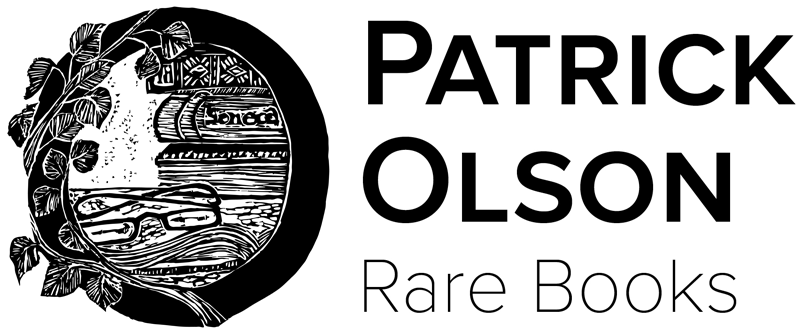The Fugger Binder (aka Venetian Apple Bindery)
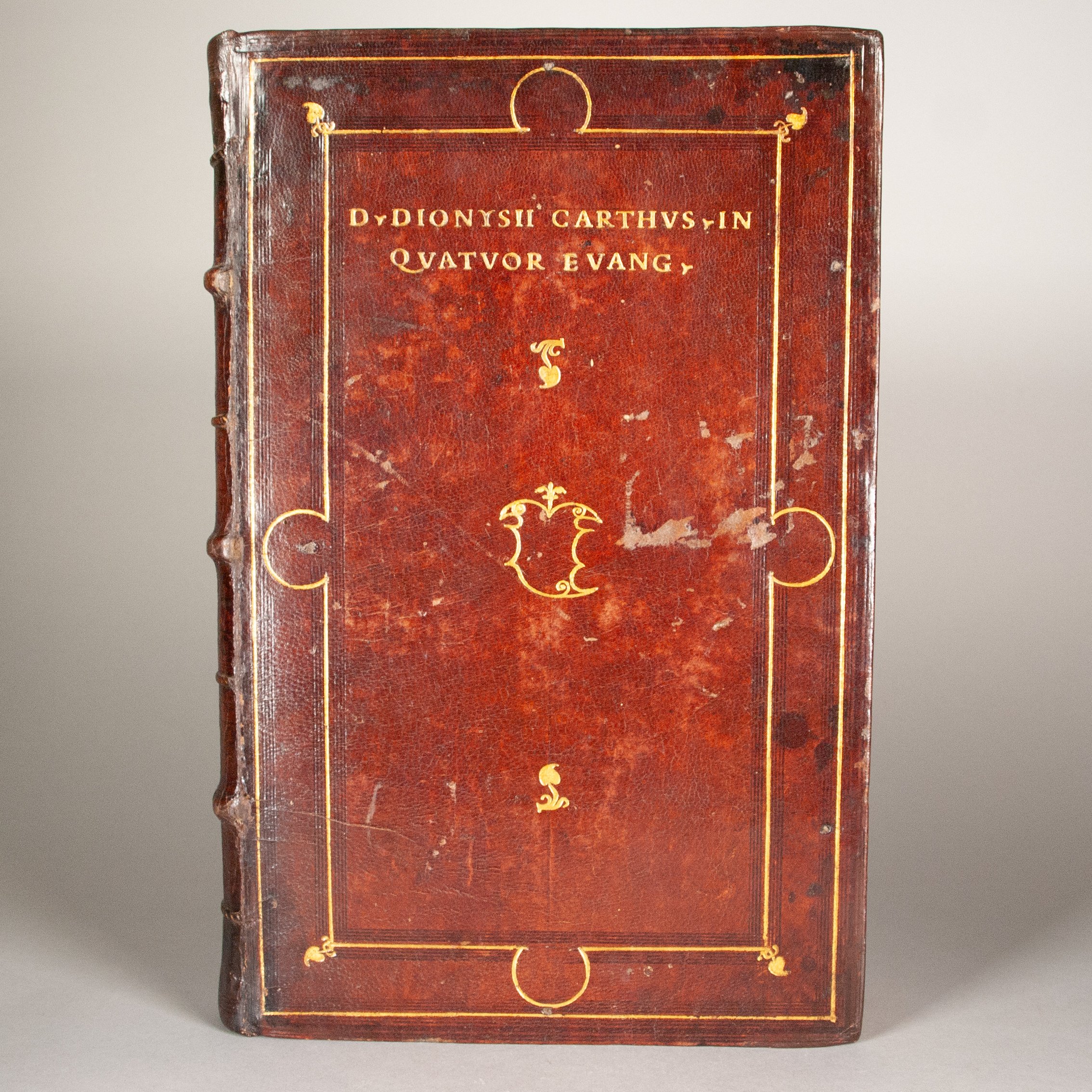
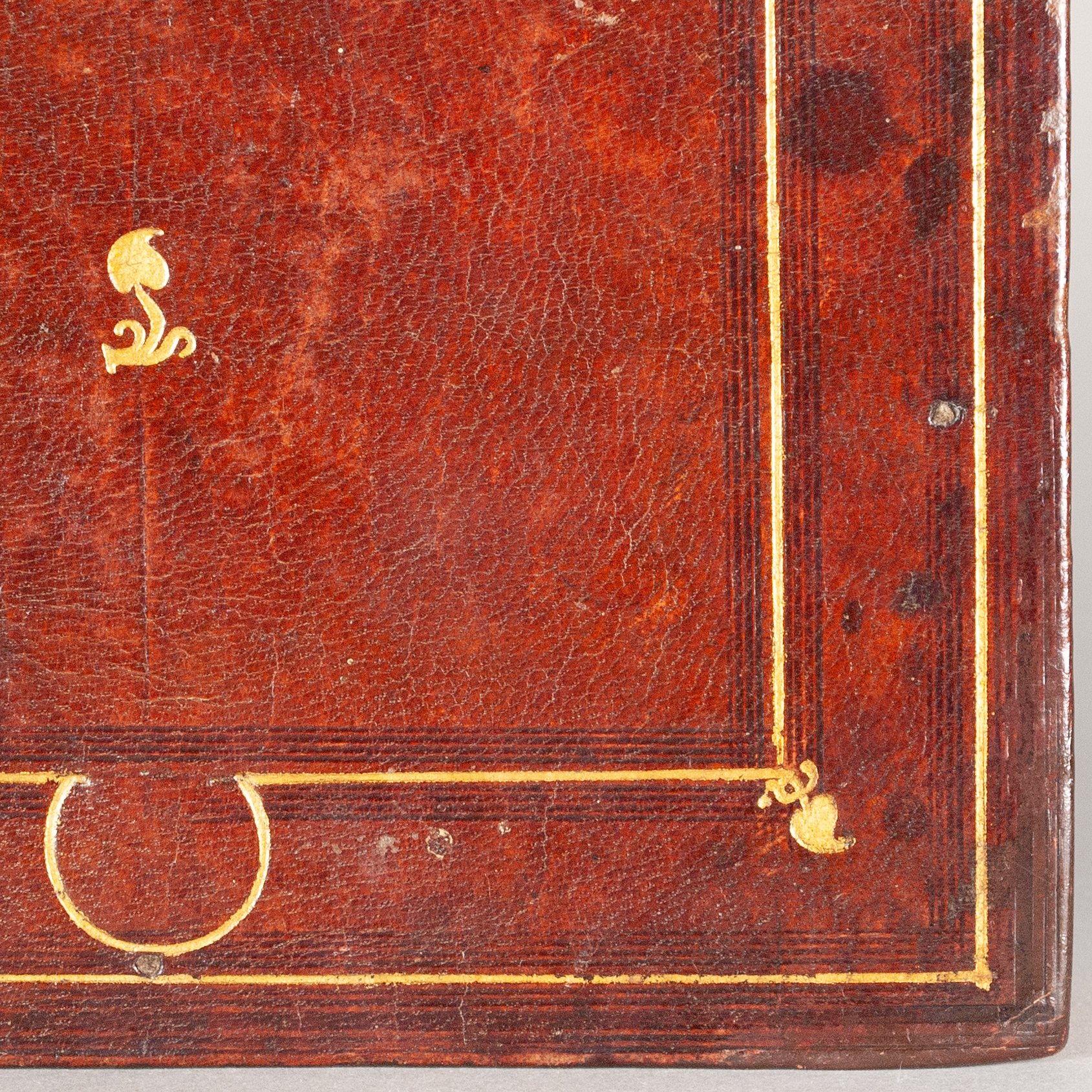
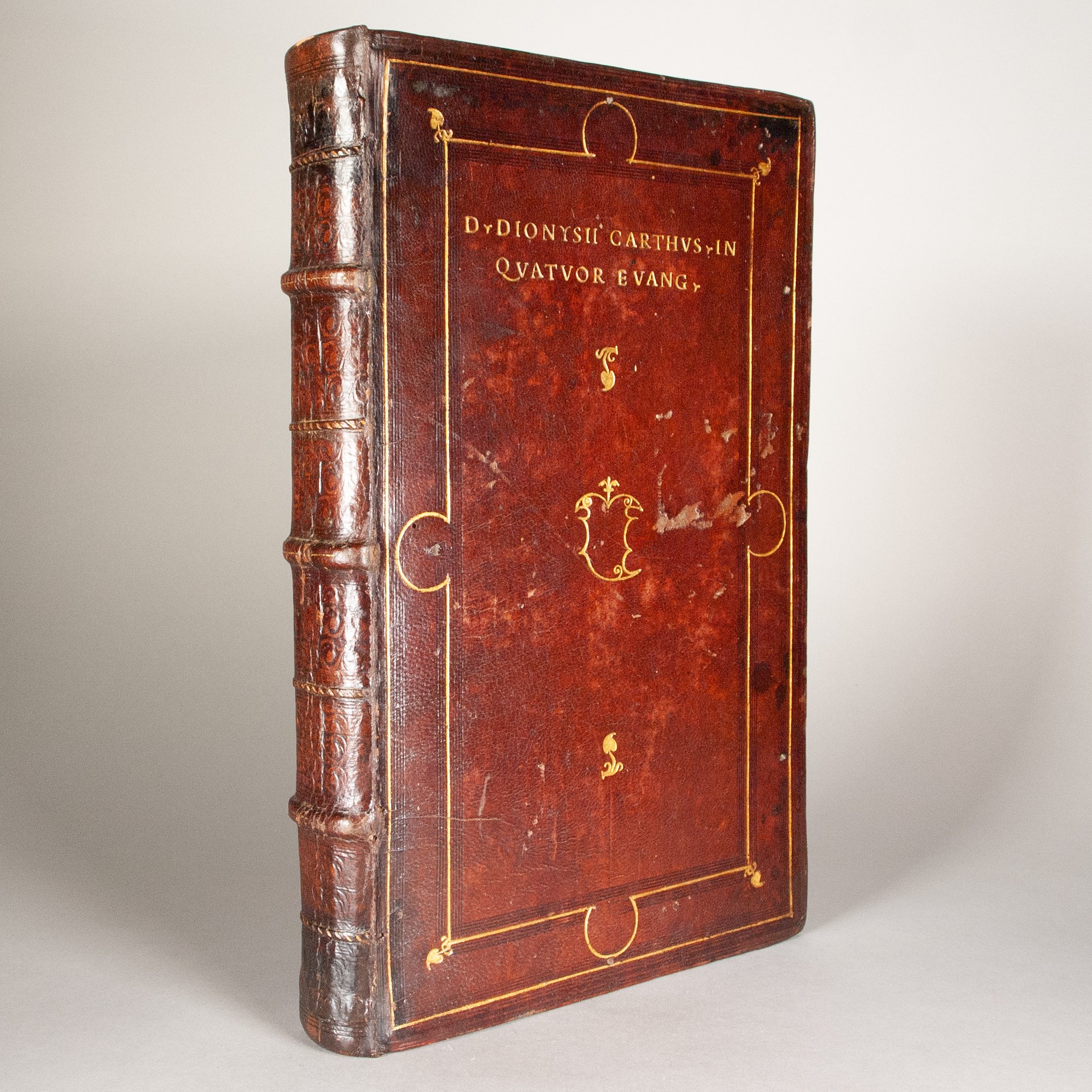
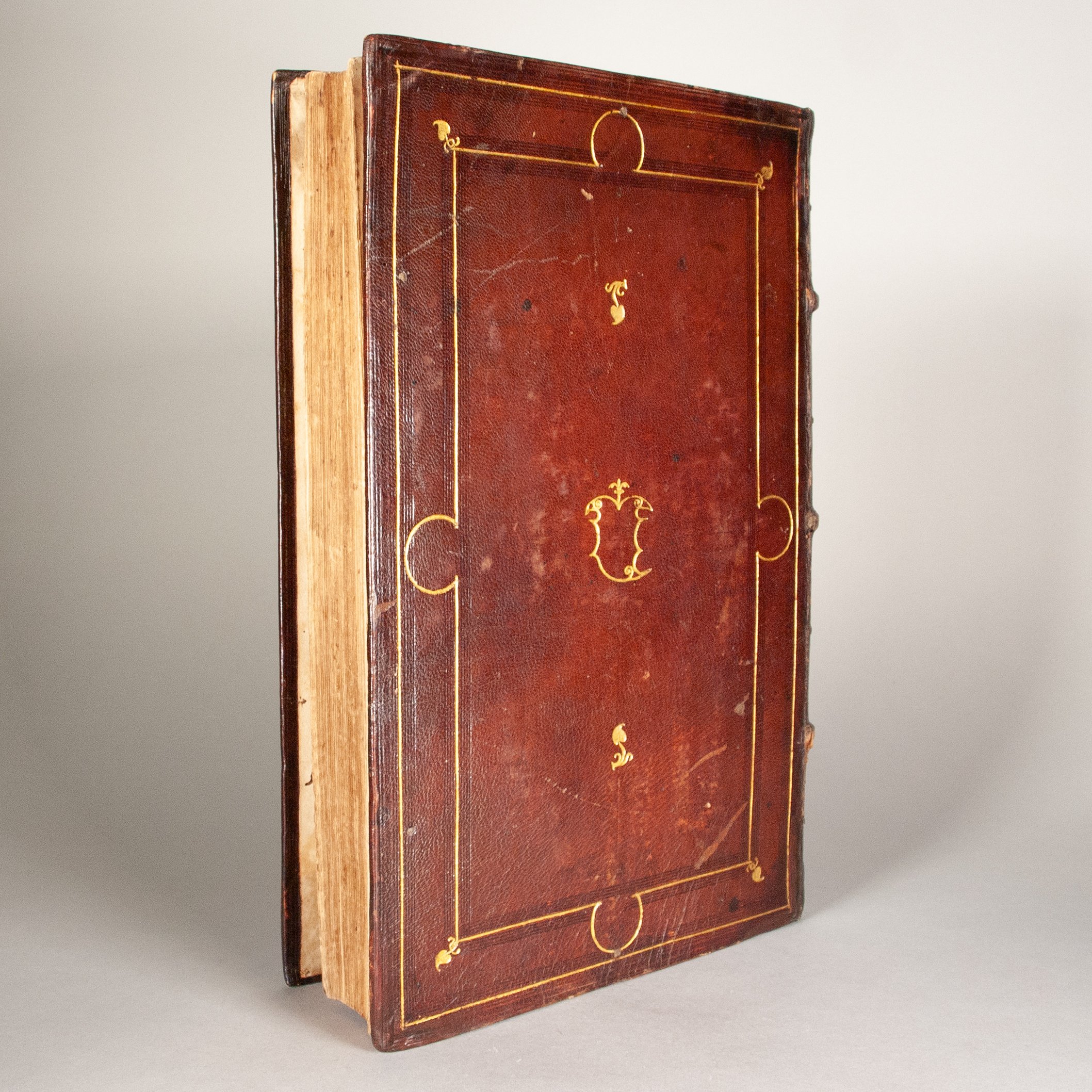
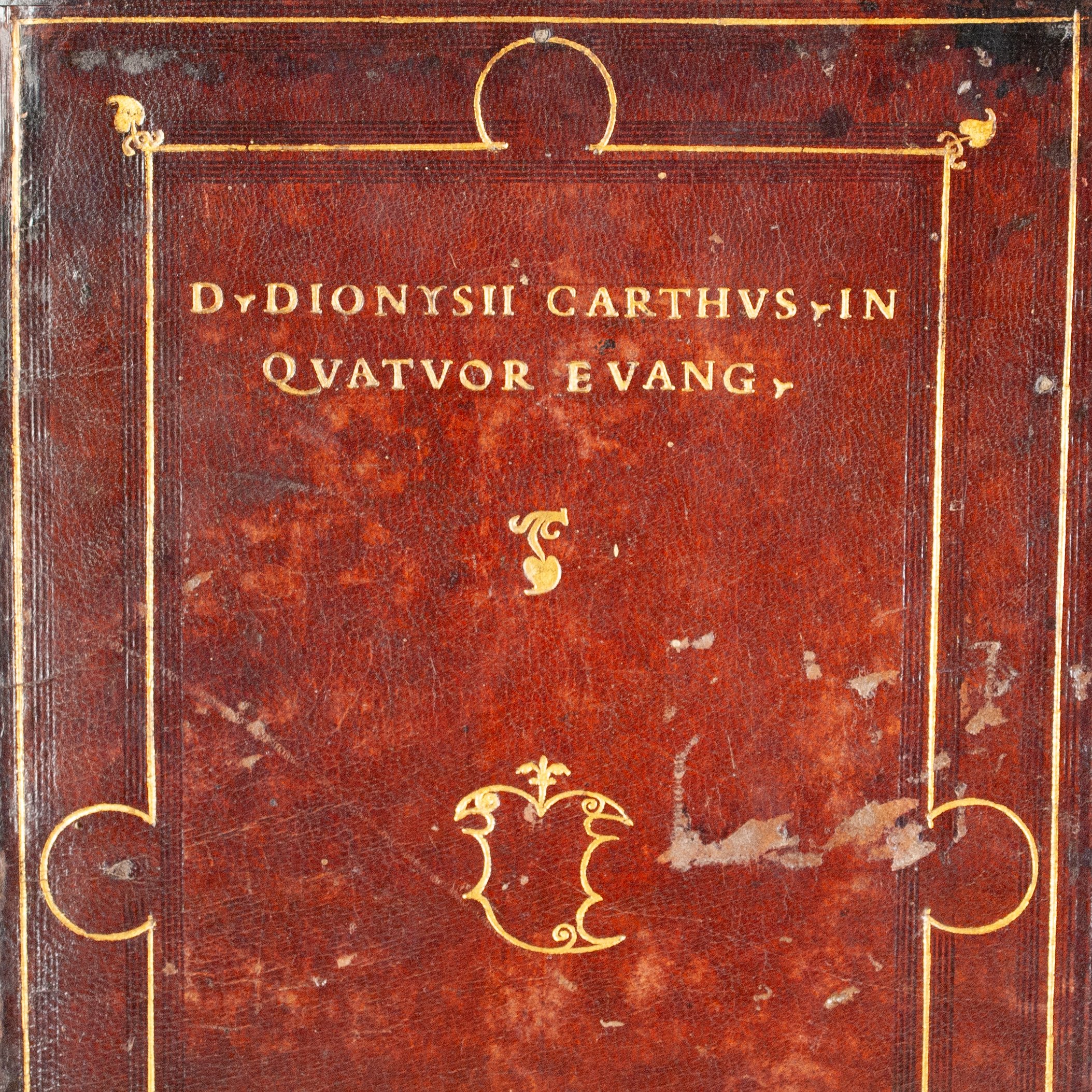
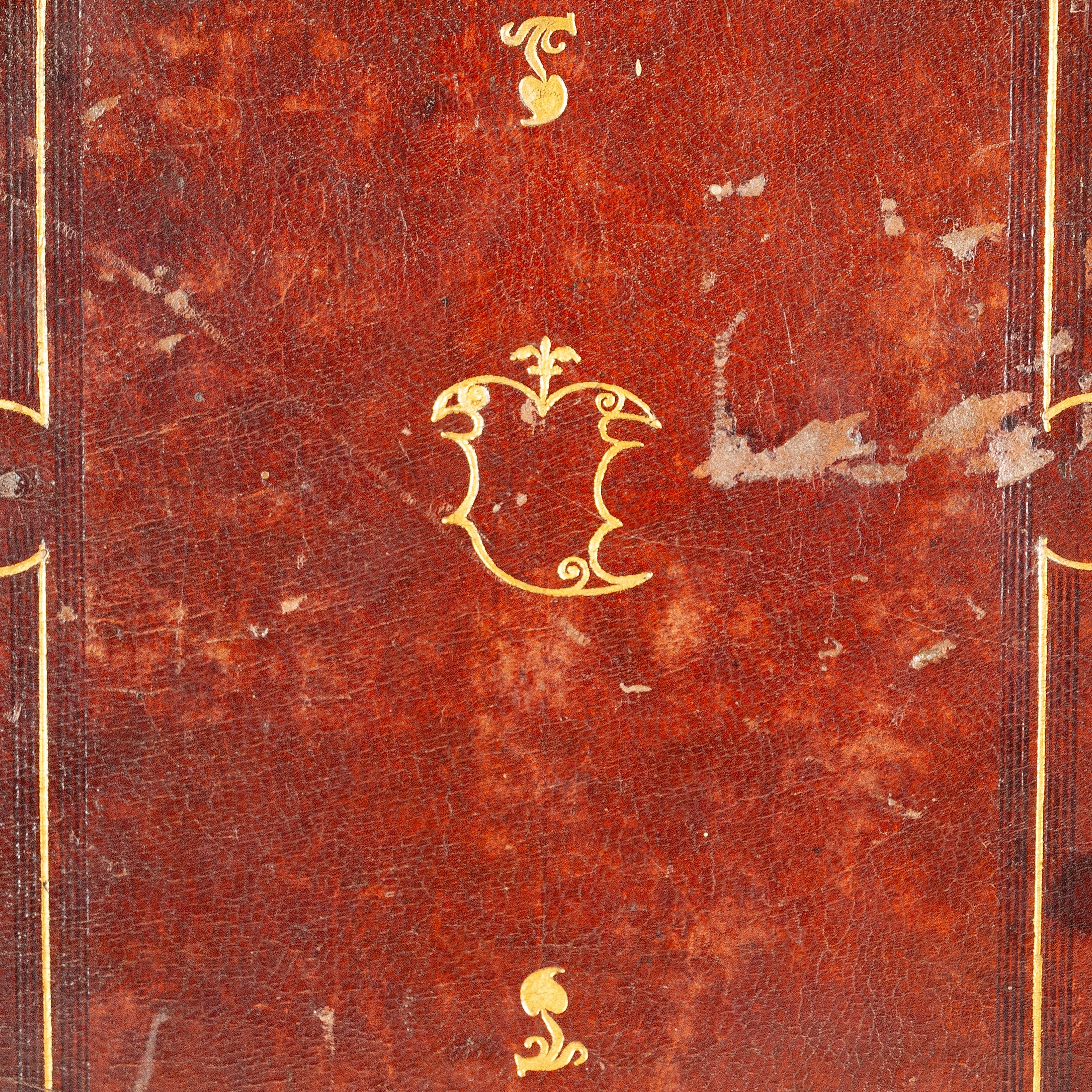
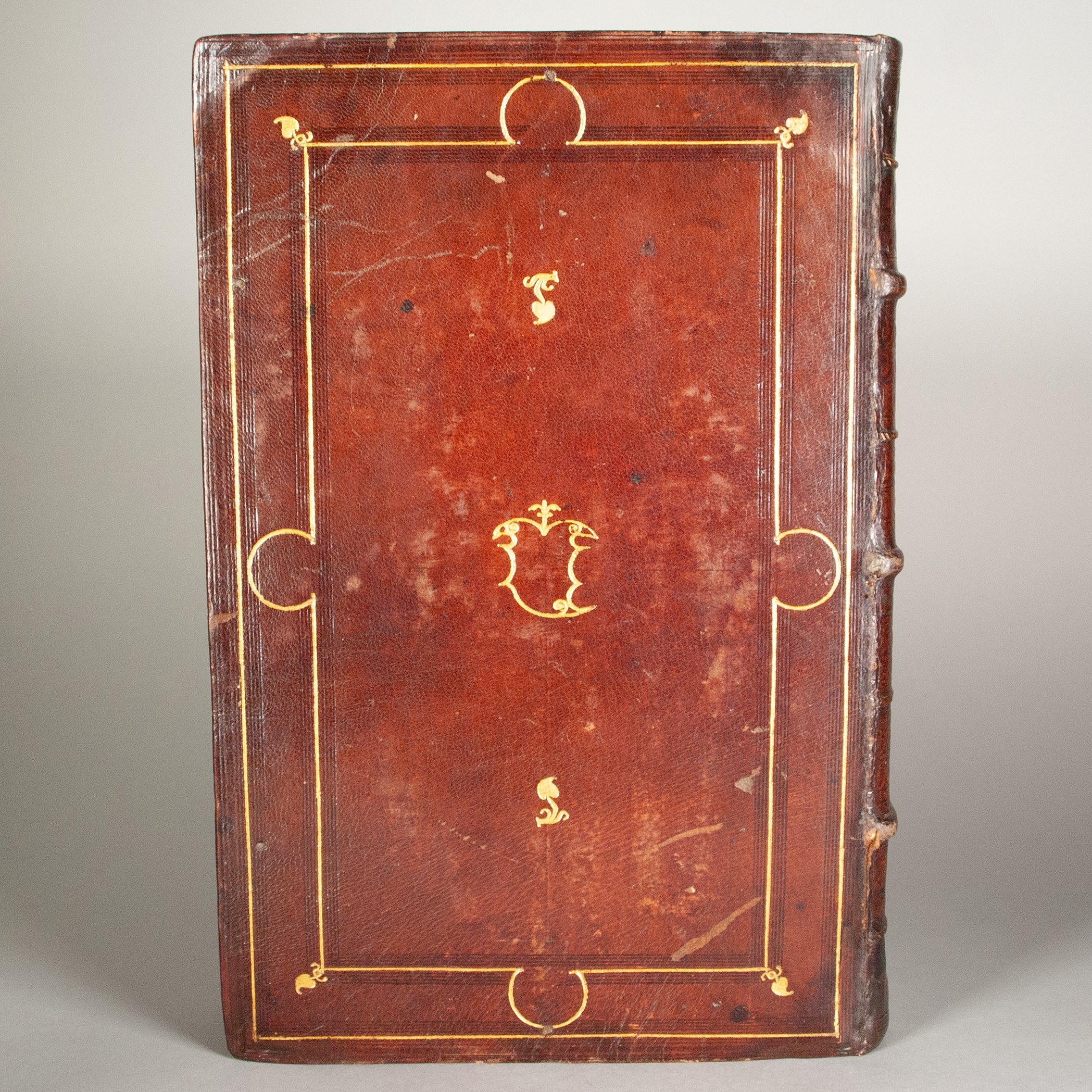
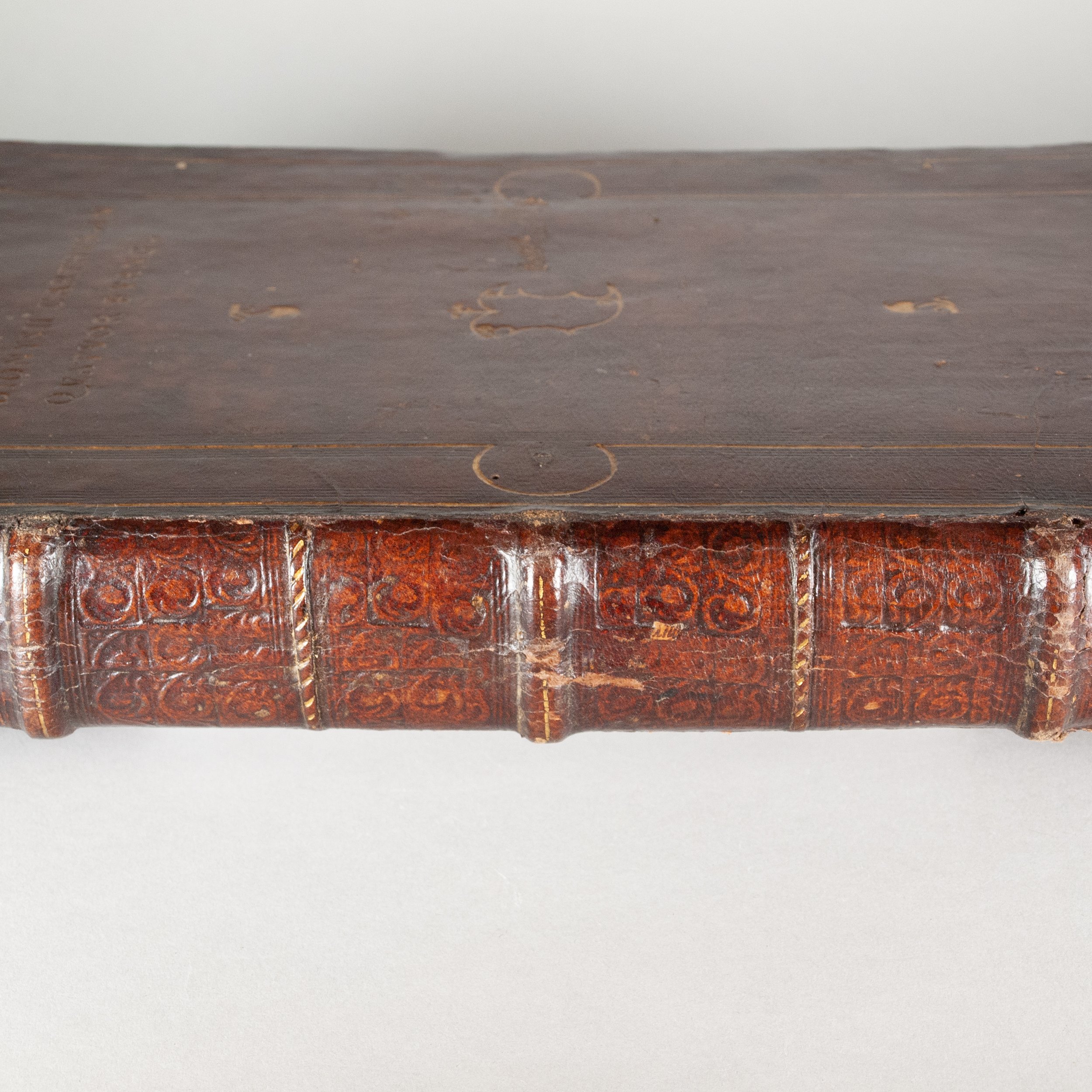
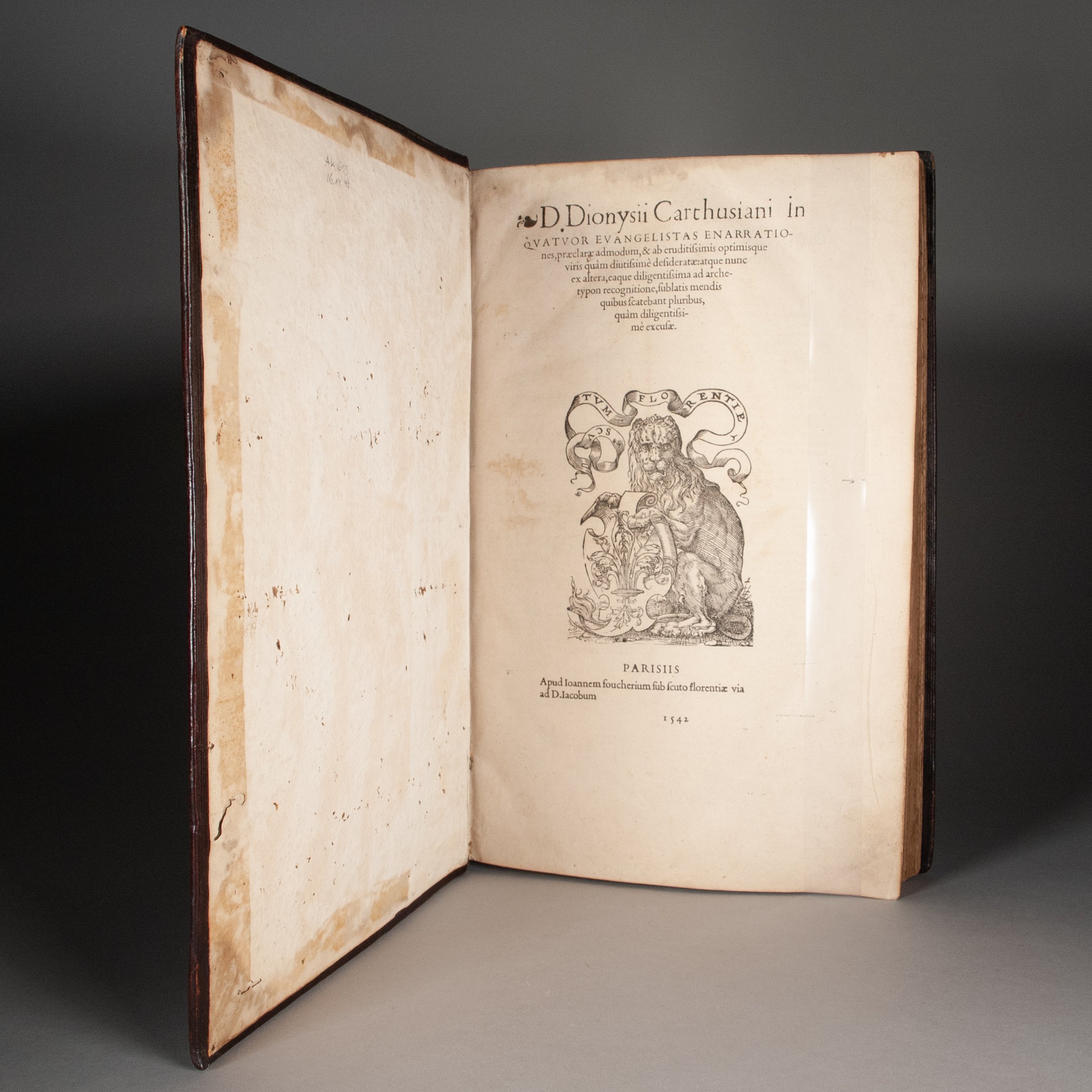
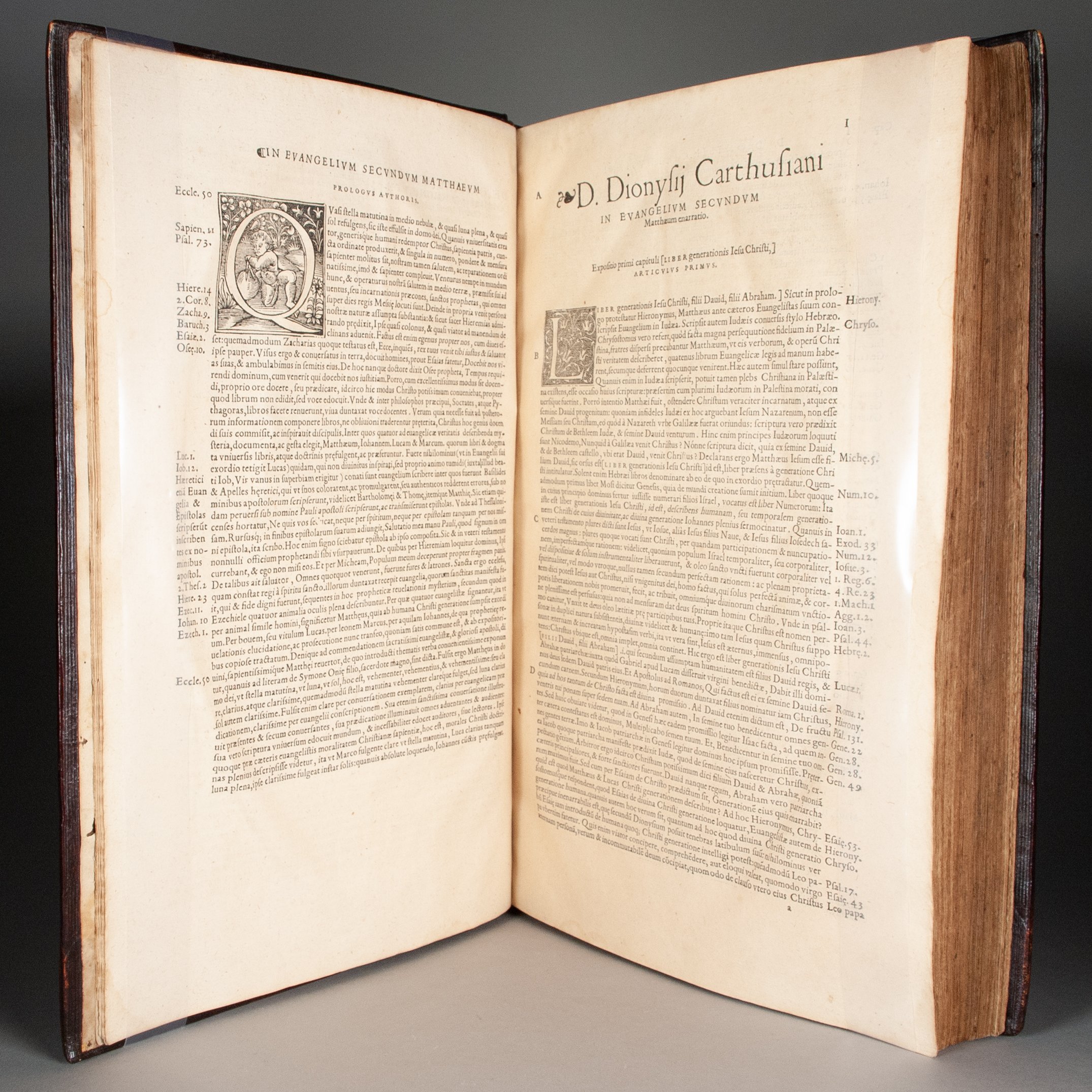
The Fugger Binder (aka Venetian Apple Bindery)
In quatuor Evangelistas enarrationes, praeclarae admodum & ab eruditissimis optimisque viris quàm diutissimè desideratae; atque nunc ex altera, eaque diligentissima ad archetypon recognitione, sublatis mendis quibus scatebant pluribus, quàm diligentisssimè excusae
by Denis the Carthusian (Denys van Leeuwen; Denys le Chartreux) | edited by Dirk Loër | with a poem by Henricus Glareanus
Paris: Michel Fezandat for Jean Foucher, 1542
[10], 358 leaves | Folio | ã^6 ē^4 a-z^8 A-X^8 Y^6 | 342 x 214 mm
Possibly an unrecorded issue of the 15th-century theologian's commentary on the Four Gospels. Dirk Loër, superior at the Carthusian Monastery of Saint Barbara in Cologne, first published his edition in 1532 (and this edition retains his original dedication to Henry VIII). We find a constellation of strikingly similar editions from the period, carrying the names of myriad printers and publishers. While Michel Fezandat graces our colophon (dated 1541), our setting is nearly identical to that which Jean Loys produced for Charlotte Guillard in 1539. We find a 1541 edition that Fezandat printed for Pierre Regnault, with foliation matching ours; and a 1542 edition that Guillaume de Bossozel printed for Jean Foucher (among others), again with matching foliation. But we've been unable to confirm another copy with our particular combination of printer and publisher. The municipal library in Trier reports a 1542 Foucher edition, but without noting the printer. ¶ In a large, tasteful binding almost certainly from the Venetian workshop of the Fugger Binder (aka Apple Bindery or Fugger Meister), one of the most celebrated studios of the 16th century, and this example strongly reminiscent of those he produced for Antoine Perrenot de Granvelle (Piquard's Type B). On the broad spectrum of confidence of attribution—tools could be copied, transferred, and lent, and successful styles were imitated—we are quite well positioned. Our composition employs the titling and standardized border design the Fugger Binder used for Granvelle's library—here using the very same corner fleuron—as well as the distinctive asymmetrical shield characteristic of other bindings from his studio. T. Kimball Brooker perhaps best described this style: "tooled in gold with a chaste and standardized design comprised of two rectangular borders consisting of a single gilt fillet flanked by multiple blind fillets, a gilt leaf at the outer angles of the inner gilt rectangle (in some cases the inner gilt rectangle with a semi-circle at mid-points of each side that extends to almost touch the outer gilt fillet), title lettered in gilt on upper covers; four pairs of fabric ties of various colors." Ilse Schunke's opinion? "There is nothing more elegant than this design." ¶ Our shield matches those found on Davis 794, Brooker's Fig. 6, Folger 12:3, and Hobson 11. Our spine, too, is decorated in the same manner as Folger 12:3 and Hobson 9: raised bands tooled in gold, alternating between a diagonal roll and single fillet, the compartments decorated in blind with what appears to be the same vine tool. Our search continues for another binding that pairs the shield with this Granvelle border style. Most documented Piquard Type B bindings are found on octavos. We suspect our book's larger size was a factor, the added shield and vine leaves meant to fill an excessive amount of empty space. While the Fugger Binder left such space empty on one folio (Renaissance Collecting Fig. 71), he added a small gold plaquette to the middle of two others (Renaissance Collecting Fig. 70 and Great Bindings Fig. 89). ¶ In 1978, Mirjam Foot sought to rebrand the Fugger Binder as the Venetian Apple Bindery. The binder worked for many clients, she reasoned, not just the Augsburg banker Johann Jakob Fugger. She took her moniker from a distinctive apple tool found on some of his bindings. In his review of Foot's work, Anthony Hobson noted that "apart from the confusion caused by changing these names of convenience her own title is open to the same objection. The apple tool appears only on the bindings of works in Italian. Works in the ancient languages were decorated in a different style." Whatever we call the studio, none of this is to suggest that the Fugger Master himself produced this particular binding, nor any particular binding that used his tools. His was a relatively large operation, employing multiple journeymen and specializing in large orders of uniform bindings. ¶ This particular Fugger style, employing the Type B border design, is scarce in the trade—compared to those decorated with arabesque tools, for example. And such large examples are scarcer still, the vast majority of those at auction found on octavos. A standout 1542 Aldine Cicero set so bound appeared in a 2023 Brooker sale at Sotheby's, with unambiguous Granvelle provenance ($40,640).
PROVENANCE: An exceptional example of a Granvelle-style binding likely made for a different client. While Schunke notes that the Fugger Binder rarely produced his Granvelle and Fugger styles for other individuals, this one seems unlikely to have been intended for the former. The added shields and central fleurons are relatively minor differences. More significant was Granvelle's strict habit of shelving his books fore-edge out, and so his Fugger bindings invariably have gilt edges with a title panel painted on the fore-edge. What's more, the vast majority of them cover Italian imprints, Aldines especially. Our Paris imprint is something of an outlier. The Fugger Binder did make three bindings for Diego Hurtado de Mendoza, at least one of them using the Type B border design. ¶ Laid in at fol. 129 is a paper cutout of something resembling an ancient Corinthian helmet. Offset ink on the front paste-down suggests a fly-leaf with old inscriptions may have been removed (and so perhaps, too, a rear fly-leaf).
CONDITION: Contemporary dark brown goatskin decorated in gilt and blind, as described above, with stubs of old ties at top edge, fore-edge, and bottom edge; spine lined with paper manuscript waste, just barely visible at the hinges. Decorative initials throughout. ¶ Small burn hole in k5, affecting a few letters; a touch of occasional foxing, and some minimal marginal worming in the last several leaves; last four gatherings dampstained in the upper margin, affecting just a few lines of text. Expertly repaired at the spine ends, possibly reusing original endbands; corners and edges of the boards likewise repaired; leather a bit scuffed, with some minor surface skinning in spots; a few small wormholes in the rear joint, two near the fore-edge of the rear board, and a bit more on the inside rear board. Altogether a very nice example of a preeminent 16th-century Italian binding style.
REFERENCES: Anthony Hobson, "Review of The Henry Davis Gift," The Burlington Magazine 122.931 (Oct 1980), p. 704 (cited above); Maurice Piquard, "Les livres du Cardinal de Granvelle a la bibliotheque de Besançon: Les reliures italiennes," Libri 1 (1951), p. 309 (his Type B of Venetian bindings from the same studio, an example illustrated in Fig. 5, with layout like ours and using the same corner fleuron, filets, and lettering tools); Mirjam M. Foot, The Henry Davis Gift v. 1 (1978), p. 313 ("Many bindings from the Venetian Apple bindery have the title tooled on the cover"), 314 (on Piquard's Type B Venetian bindings: "The tools which are used on these examples are the same as were used by the Venetian Apple Binder"); Henry Davis Gift v. 3 (2010), p. 356 (Davis 794, for the shield), 357 (Davis 799, a glimpse of spine tooling), 359 (pair of Granvelle bindings with similar borders and the very same corner fleurons); T. Kimball Brooker, "The Library of Antoine Perrenot de Granvelle," Bulletin du bibliophile (2015 #1), p. 39 (cited above); Ilse Schunke, "Venezianische Renaissanceeinbände," Studi di bibliografia e di storia in onore de Tammaro de Marinis (1964), v. 4, p. 170 ("Primarily geared towards supplying larger, uniform collections, it developed into a large-scale bookbinding operation with a staff of journeymen...The mass orders he took on brought with them a certain uniformity in the binding designs"), 171 (cited above), 172 ("the characteristic designs of the library bindings of both collectors [Fugger and Granvelle] were only rare made for other customers—they remained, it seems, simply a distinction for an illustrious bibliophile"); Fine and Historic Bookbindings from the Folger Shakespeare Library (1992), p. 194, #12:3 ("The 'Fugger Binder'...was active in Venice from c. 1540-1560"); Anthony Hobson, Italian and French 16th-century Bookbindings (1991), #9 (also using the same corner fleurons), #10 (On the Fugger Master: "It is probable from the evidence both of letters in the Granvelle archive and of the books he bound that he was closely connected with Gabriele Giolito"), #11 (another appearance of the shield); Anthony Hobson, Renaissance Book Collecting (1999), p. 119-221 (more on the typical Granvelle bindings, and reproducing two with our characteristic borders, these Figs. 70 and 71 cited above); Anthony Hobson, "Diego Hurtado de Mendoza," Great Bindings from the Spanish Royal Collections, p. 132-133 (for Mendoza's Fugger binding)
Item #832
